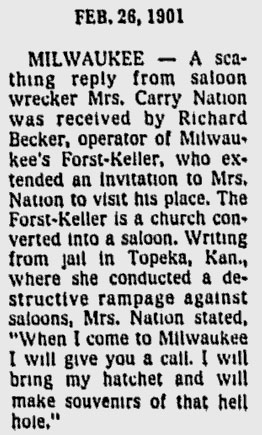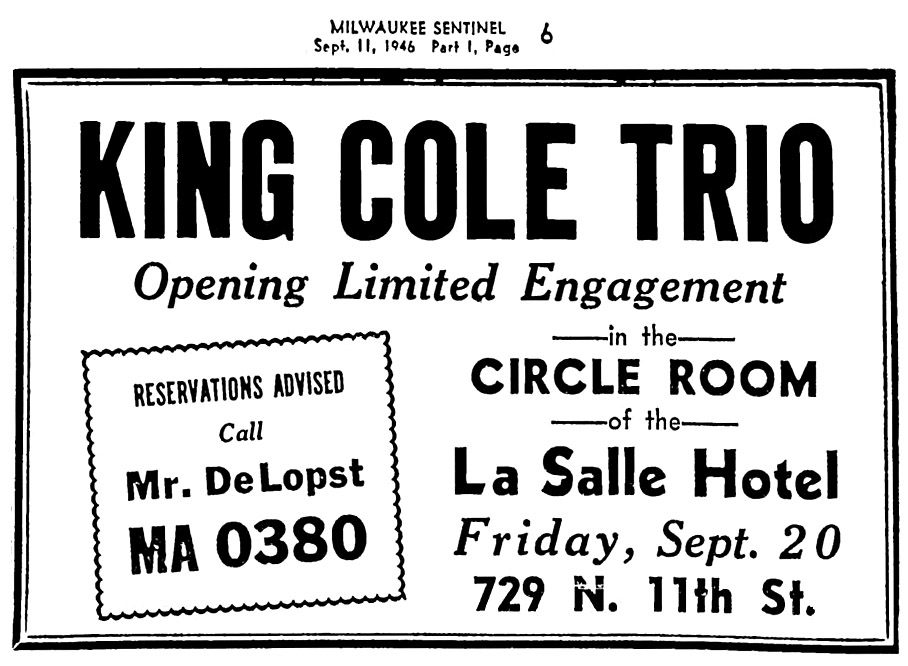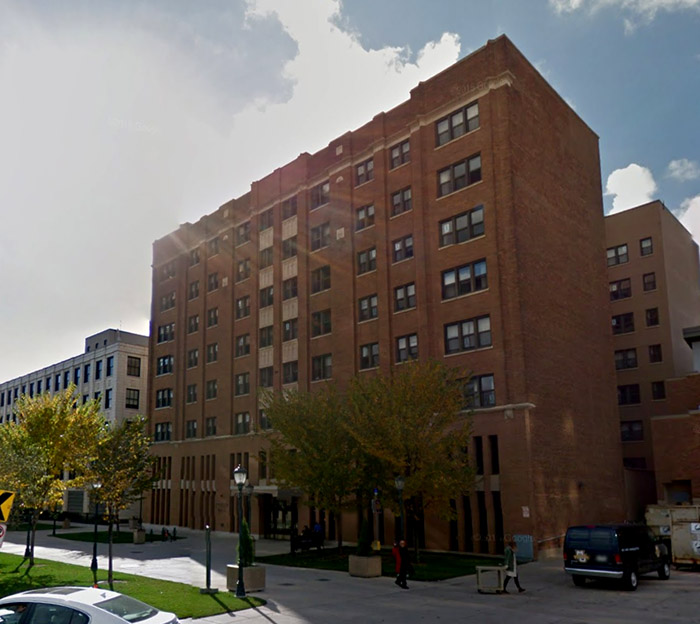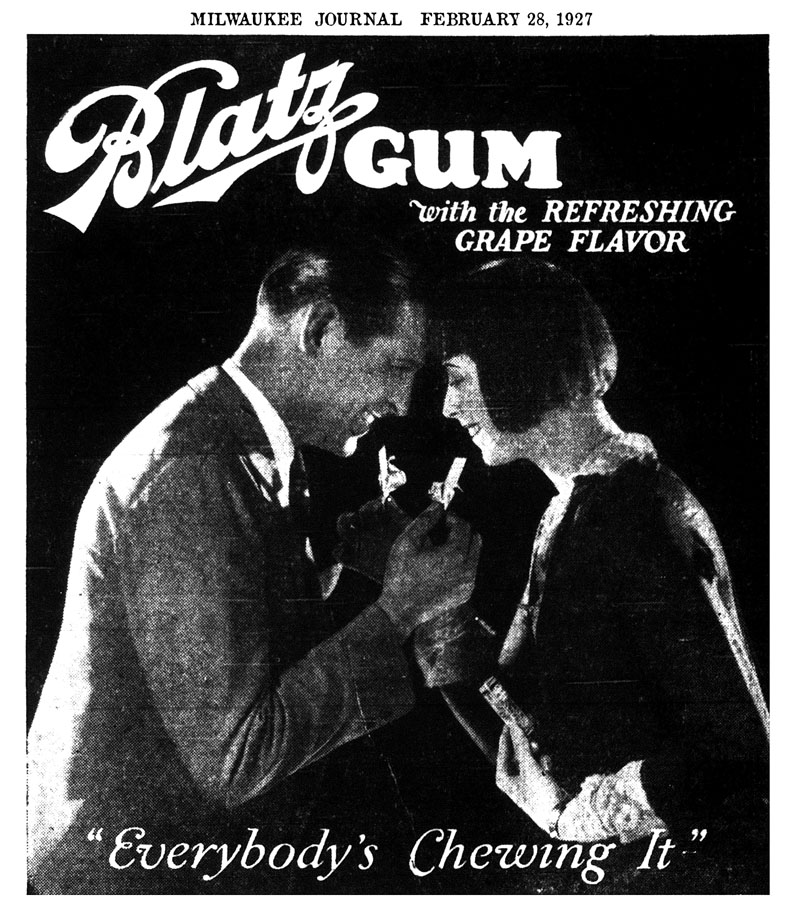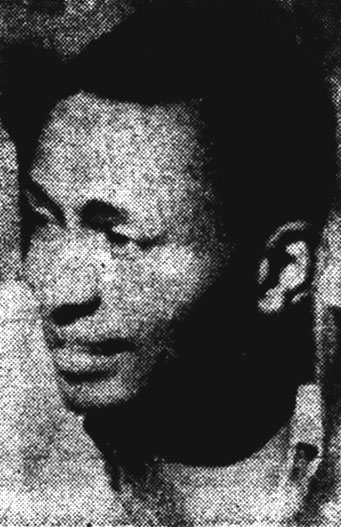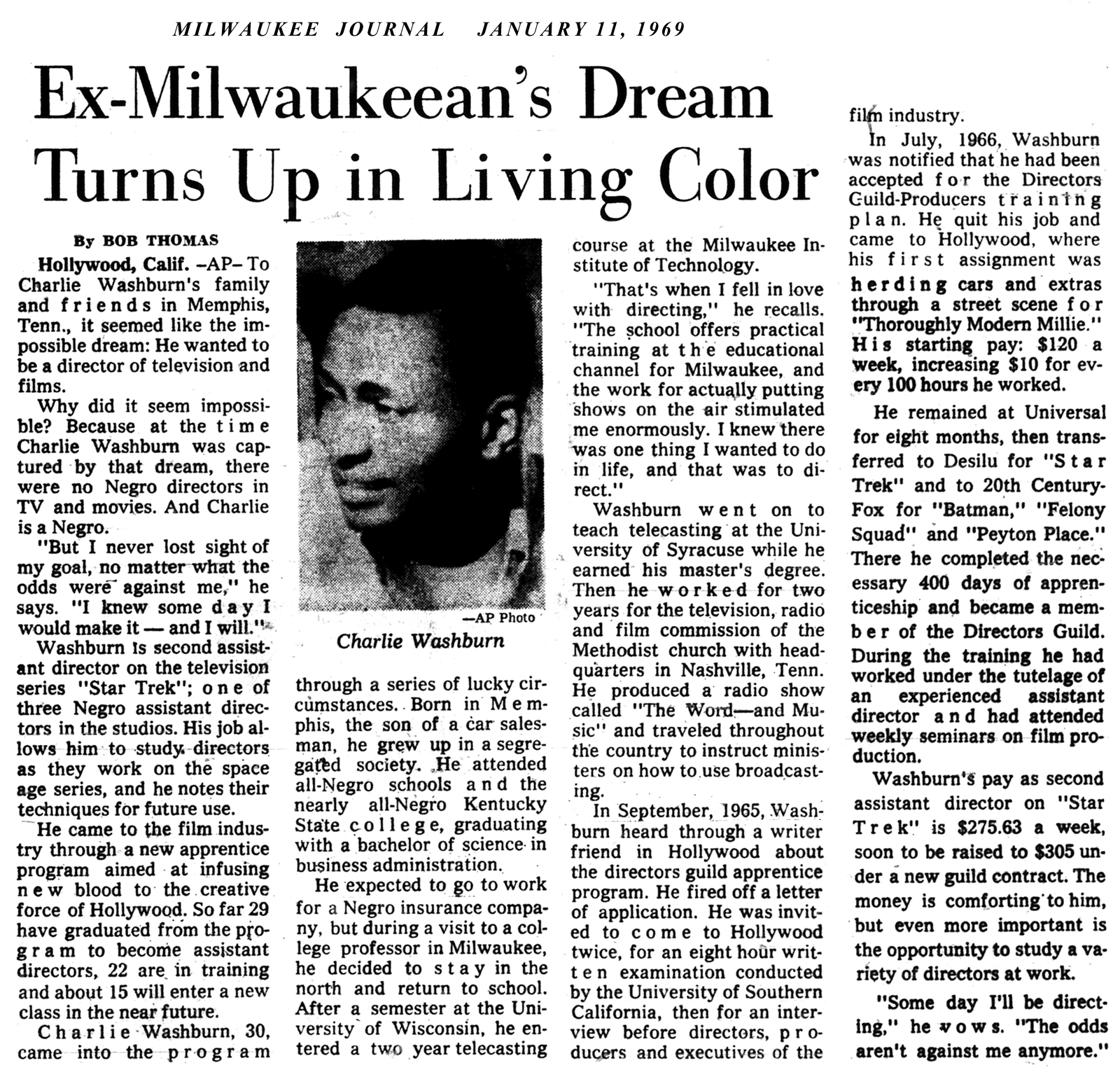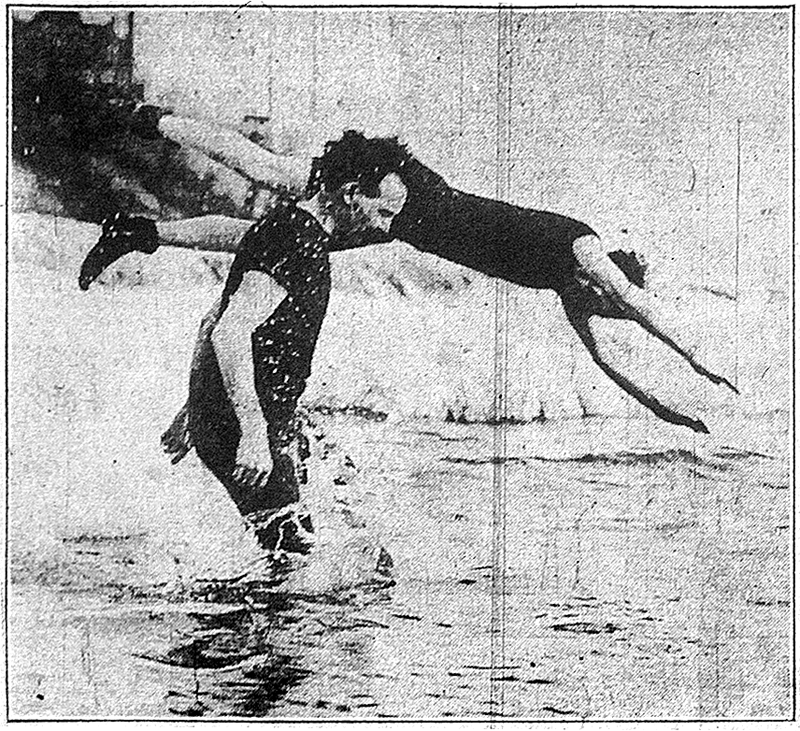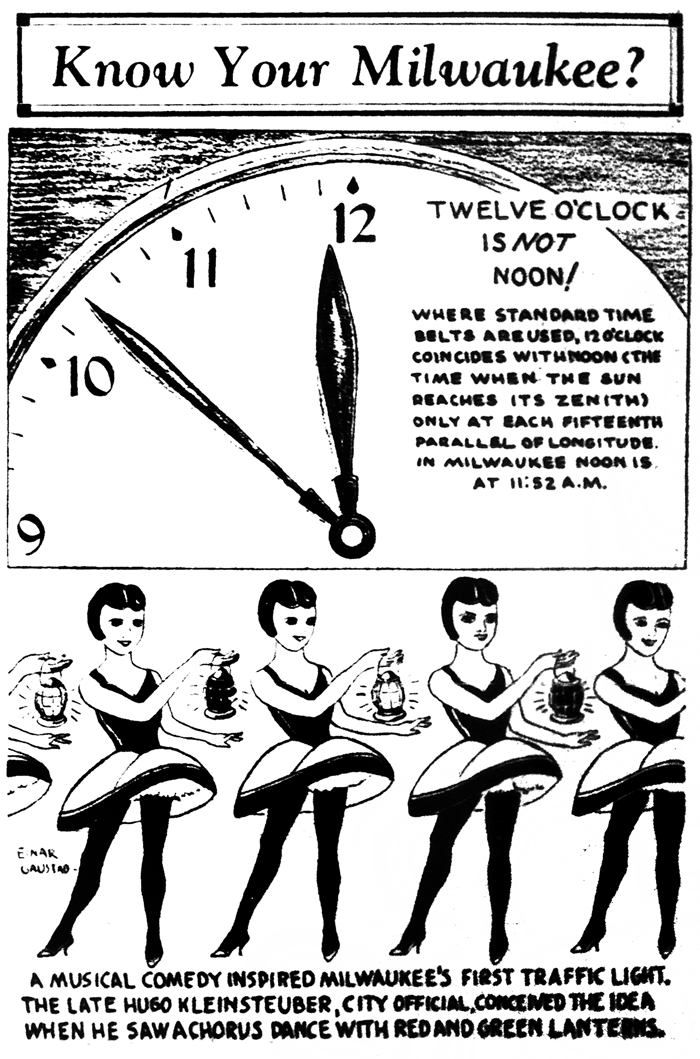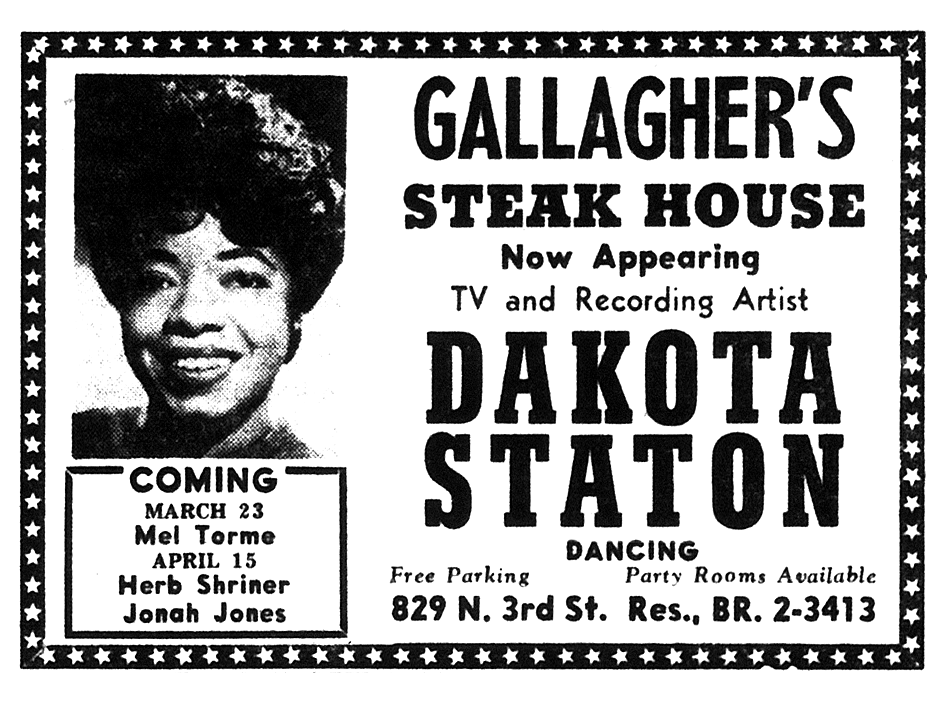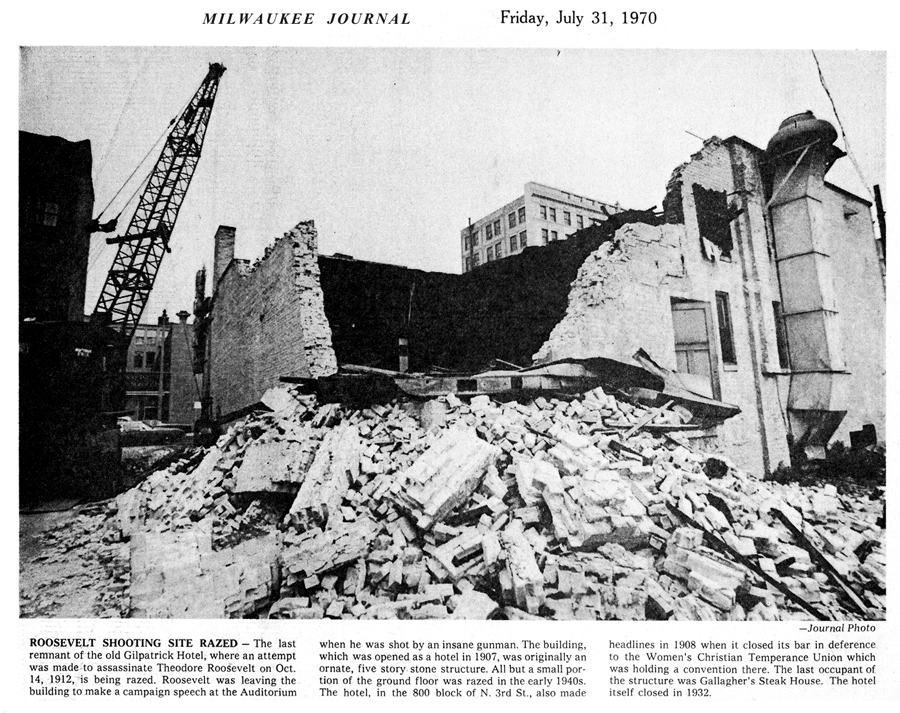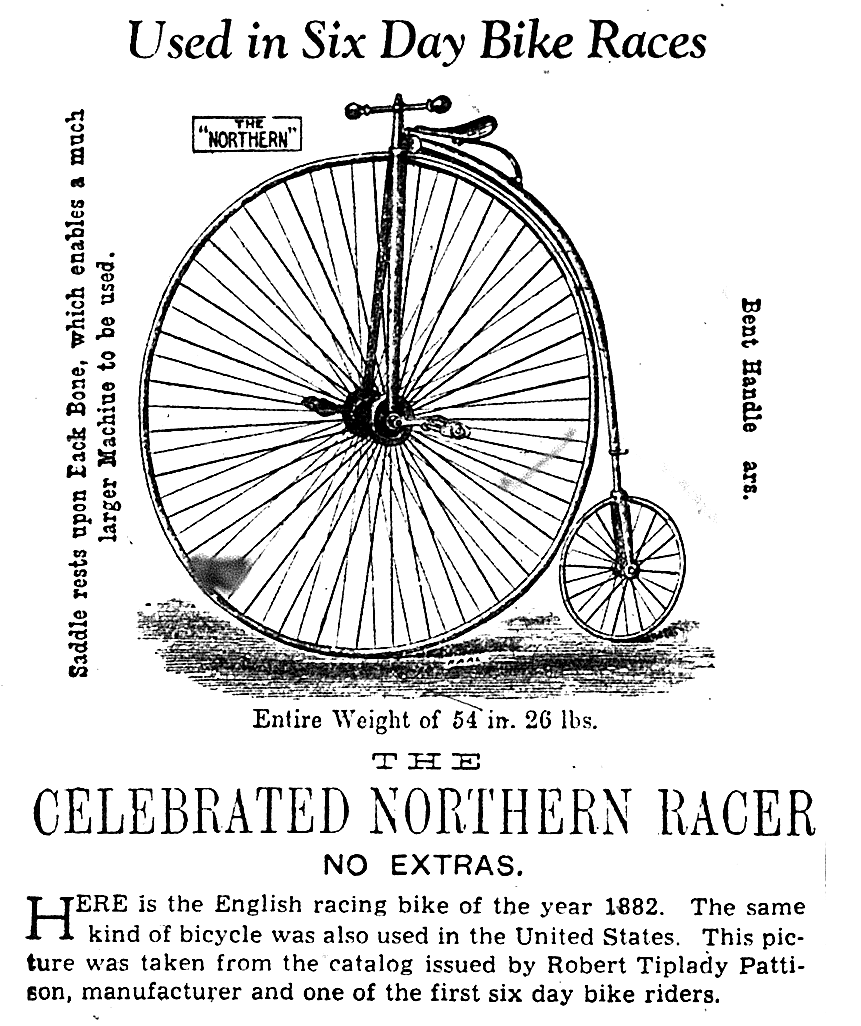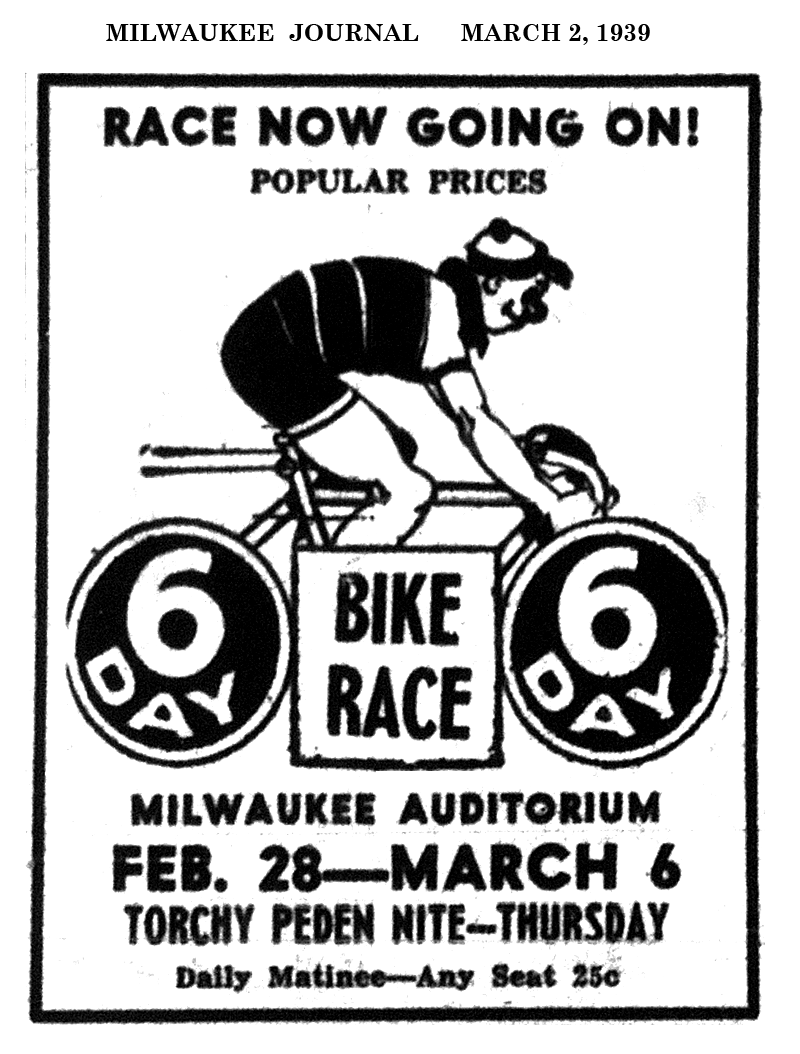The big news unveiled today was the announcement that Pabst will once again be brewed in Milwaukee. The location of this new microbrewery and tasting room is the former Forst-Keller in the Pabst brewing complex. Several newspaper articles over the years tell of its long history including this one from 1953.
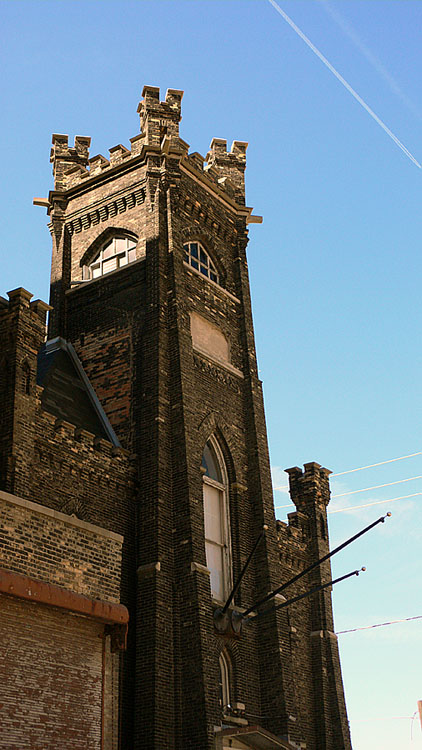
This 1973 article tells of the final closing of the restaurant.
Milwaukee Journal, September 2, 1973
Landmark Cafe to Close
The Forst-Keller, a German restaurant at 1037 W. Juneau Ave. and an official Milwaukee landmark, will close Sept. 15.
The Pabst Brewing Co., which has since owned the restaurant since the late 1890s, plans to turn the building into a brewery museum. The restaurant, originally a German Methodist Church, was built 100 years ago. In July it was designated an official landmark by the Milwaukee Landmarks commission.
The restaurant has had a long and colorful history. Over the years it has been a meeting hall for three singing societies – the Milwaukee Liederkranz, the Lieder Tafel, and the Bel Canto Chorus. The restaurant has also been a popular eating place for Courthouse judges and employes and for brewery workers.
The Forst-Keller closed for six months in 1971. It was reopened in December of that year and has been operated ever since by Karl Skacel and his wife, Gretchen. The Skacels formerly operated Karl and Gretchen’s Supper Club on Lake Nagawicka.
The restaurant was operated from 1937 to 1960 by two brothers, Richard and Fritz Baumann. Their wives did all the cooking.
Between 1964 and 1971 Adolf (Adi) Binder ran the restaurant. Binder’s mother, known as “Mutti” to customers, was the chief cook.
During World War II the Forst-Keller and other German style restaurants in the city were believed to be gathering spots for Nazi supporters. It was said that FBI agents began frequenting the restaurant in the line of duty during the war years.
No date has been set for its reopening as a museum. A brewery official said the company would refurbish the building. It will house Pabst’s collection of old beer steins, antique brewing equipment and other mementos.
And finally this newspaper story from 1901 sheds a more humorous light on the history of the Forst-Keller. Hope to have a beer there with you when it opens!
